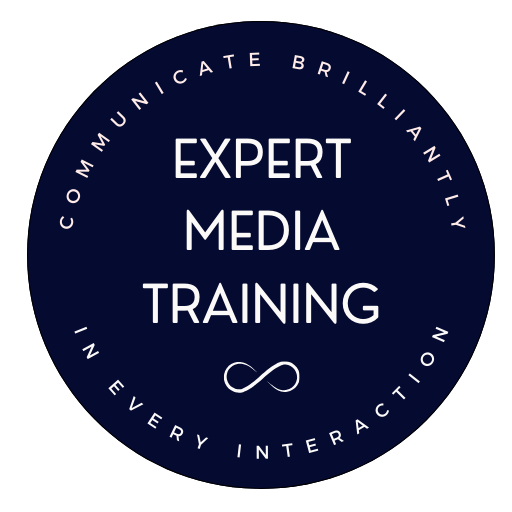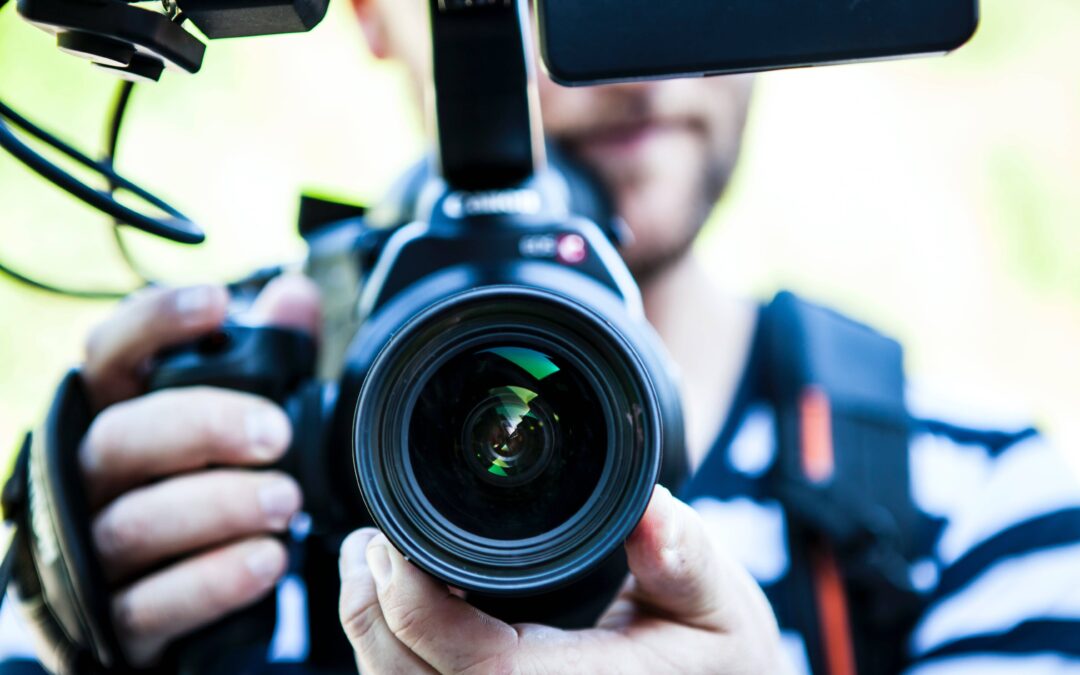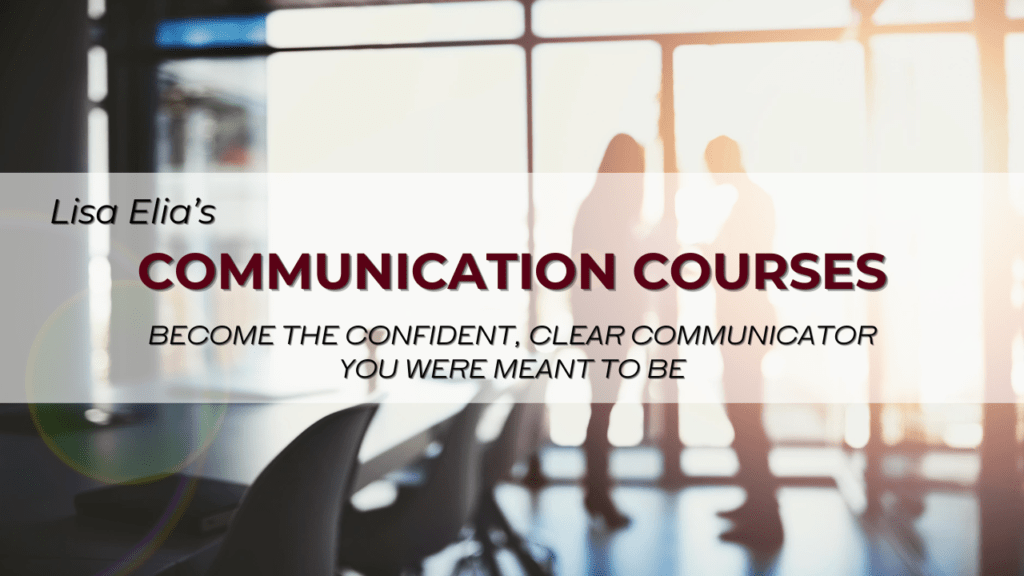
Monday, June 1, 2020 | Branding, Communication, Messaging
When I was a child, my family lived in Geneva, Switzerland for a few years for my father’s job at DuPont. When I got older, my father told me that there were times that he was in meetings with people he had reason to believe were Nazis, which incensed him. He’d served in the U.S. Navy in WWII, so this must have added another layer of outrage for him.
I’m writing this today because I believe many people in business have shied away from expressing our views on politics and social issues publicly to avoid alienating people with whom we do business that might hold beliefs that differ from our own.
I feel as if recent events are compelling us to rip the tape from our mouths as we can no longer hold back. If I speak out on behalf of racial justice or any other cause that supports greater equality and respect for ALL people and it offends someone, I am not the trainer for them.
We each have to find our tribe. My tribe consists of people who love people and are anti-racist. Period.
Would you like more tips and articles delivered straight to your inbox?
Click here.

 This post was written by Lisa Elia, a media trainer, presentation trainer, pitch coach, communication expert, and speaker. She trains clients around the world for media interviews, speeches, internal and external presentations, panels, investor presentations, and promotional videos, and provides executive and team communication coaching.
This post was written by Lisa Elia, a media trainer, presentation trainer, pitch coach, communication expert, and speaker. She trains clients around the world for media interviews, speeches, internal and external presentations, panels, investor presentations, and promotional videos, and provides executive and team communication coaching.
With more than 25 years of experience, Lisa has prepared clients for interviews with TODAY, GMA, The Wall Street Journal, CNN, ESPN, and hundreds of other outlets. Lisa has shared her expertise with national media outlets that include Inc., Entertainment Tonight, E!, and many others. Clients include entrepreneurs, Fortune 500 companies, and everything in between as well as athletes, celebrities, and other public figures.

Wednesday, April 8, 2020 | Communication, Crisis Communication, Media Training, Messaging
Four Steps to Prepare for Business Reopening During COVID-19
Now Is the Time to Plan for Changes in Procedures and Communications
With all of the adjustments that most companies have made to respond to the COVID-19 pandemic, it’s easy to focus primarily on the challenges in front of you. However, for business leaders, this is precisely the time to think about the shifts you will need to make to do business when social distancing mandates have lifted. You can take the same approach to planning for business reopening during COVID-19 that I use when working with clients to create both a general communication plan and the health-related component of a crisis communication plan. Communication planning is best when it is customized, but here are four steps that most businesses can follow.
Four Steps to Prepare for Business Reopening During COVID-19
1. Identify risk perceptions and misconceptions.
2. Identify actual risks.
3. Examine and upgrade procedures.
4. Communicate about upgraded procedures internally and then externally.
As you dive into each step more deeply, it can be beneficial to get input from team members at various levels of your organization through quick surveys or checklists. Here are the four steps with more detail.
- Identify Risk Perceptions and Misconceptions.
Go through every step of an interaction that a person might have with your business and consider what your customers or clients, employees, and others might believe are the risks to their health. These perceived risks may or may not be valid, but by addressing them properly you can help allay people’s fears.
Consider that many people’s attitudes about personal health and hygiene may be forever changed. During the social distancing mandates, many people will have become accustomed to the perceived safety of their homes where they can control their environments. When social distancing mandates are lifted their fears concerning the virus and germs, in general, won’t simply vanish.
A new, higher standard of hygiene will be expected by many people from all walks of life. If you question whether or not health and hygiene habits change with new information, consider the behavioral changes that people have made in response to scientific studies. To cite some examples of old behaviors that have changed: smoking used to be allowed on airplanes (and in almost every environment), bobbing for apples was a party game, and just about no one used to wipe down the handles of grocery carts. History has shown us that people can and do adapt to change and expect it when it protects their health and wellbeing.
- Identify Actual Risks.
 Identify points of surface-contact and face-to-face human interaction that are required in your business.
Identify points of surface-contact and face-to-face human interaction that are required in your business.
Take inventory of items that might be shared, such as coffee machines in offices, pens, or touch-screens where visitors sign in at a business office, and the more obvious door handles, retail store counters, dining tables, and restrooms.
- Upgrade Procedures.
Now that you have identified risks and perceived risks, develop procedures to address them, and to enforce compliance with your new and existing hygiene practices.
If contact with a surface is necessary, determine how the surface can be cleaned in a way that is sustainable in terms of labor and materials. If phone apps, motion-sensor technology, or other methods of eliminating surface-contact are possible, consider them.
Regarding face-to-face human interactions, we will probably all need to follow the lead of health professionals once social distancing has ended. Of course, this will vary greatly from industry to industry.
Replace items that are shared with safer alternatives. For example, if you have a stack of coffee cups near your office coffee machine consider replacing it with an enclosed cup dispenser.
Determine whether extra staff members will be needed to uphold your new hygiene standards and how this you’re your affect costs, organizational chart, and training procedures.
Consider changing your hiring practices to find employees who have the psychological makeup to comply with your new hygiene practices, if necessary.
If you produce products, create measures to ensure that manufacturers adhere to your hygiene standards, such as occasional live virtual tours to see the production or packaging of your products in real-time.
Talk to your vendors to find out what they are doing to maintain or improve their hygiene practices.
- Communicate About Upgraded Procedures Internally and then Externally.
Once you have determined the changes you will have to make regarding procedures, consider how you will communicate them to your staff, vendors, manufacturers, customers, clients, and other people who will be affected. These communications can include:
∙ internal communications, such as memos and training handbooks and videos;
∙ vendor hygiene-adherence agreements;
∙ contract revisions and amendments with manufacturers;
∙ and external communications with customers, clients and the general public, such as emails, texts, social media posts, videos, press releases, ads, and content on your website.
Be clear about the changes you are making in your products, services, and/or procedures in an effort to protect people’s health. In times of uncertainty, people crave certainty. Be resolute about the things you can control that will affect them.
 Adjust the tone of your communications to meet people where they are in terms of emotional state and practical concerns at the moment and projected into the near future. Infuse your communications with warmth, hope, and the emotional components of your brand. Backed up with solid plans and actions, your words will have more meaning.
Adjust the tone of your communications to meet people where they are in terms of emotional state and practical concerns at the moment and projected into the near future. Infuse your communications with warmth, hope, and the emotional components of your brand. Backed up with solid plans and actions, your words will have more meaning.
Lisa Elia, the author of this article and founder and lead trainer at Expert Media Training, provides services creating communication plans, media training, presentation training, investor pitch coaching, and video communication skills training.
For a complimentary consultation contact our office at 321-821-3088.
Or, email us at team@expertmediatraining.com.
Would you like more tips and articles delivered straight to your inbox?
Click here.

 This post was written by Lisa Elia, a media trainer, presentation trainer, pitch coach, communication expert, and speaker. She trains clients around the world for media interviews, speeches, internal and external presentations, panels, investor presentations, and promotional videos, and provides executive and team communication coaching.
This post was written by Lisa Elia, a media trainer, presentation trainer, pitch coach, communication expert, and speaker. She trains clients around the world for media interviews, speeches, internal and external presentations, panels, investor presentations, and promotional videos, and provides executive and team communication coaching.
With more than 25 years of experience, Lisa has prepared clients for interviews with TODAY, GMA, The Wall Street Journal, CNN, ESPN, and hundreds of other outlets. Lisa has shared her expertise with national media outlets that include Inc., Entertainment Tonight, E!, and many others. Clients include entrepreneurs, Fortune 500 companies, and everything in between as well as athletes, celebrities, and other public figures.

Tuesday, November 15, 2016 | Media Interview Tips, Media Training, Messaging, Panels, Presentations, Public Speaking
1. Know what drives your audience at any given time; pain avoidance or aspiration.
Some people are more motivated to avoid pain, thus the “speak to their pain points” advice that has proliferated on the Internet for the past decade. Others are more motivated by their aspirations or ideals. Most people’s motivations can vacillate between pain avoidance and aspiration, depending on the matter at hand.
When preparing for media interviews, presentations and panel discussions, consider which form of motivation is strongest for your audience in relation to the topic you are discussing and shape your messages accordingly.
2. Pay attention to the fringes.
Many people focus only on their primary target market and they often ignore or overlook smaller market segments and key influencers. (Key influencers are the people who influence your target audience’s decision-making process and can include business advisors in other fields, managers, agents, assistants and spouses, among others.) Maintain visibility, or relationships, with ALL of your publics; your target market as well as opinion leaders, key influencers and secondary and tertiary markets. Tides change in the world and in business, and there may be a time when your secondary and tertiary markets become important to your bottom line or your position in your industry.
As you prepare for media interviews, presentations and panels, identify logical places where it makes sense to address the needs of your secondary and tertiary markets and key influencers.
3. Draw out silent members of your audience.
There will be times when a segment of your target audience or certain stakeholders do not speak out. Instead of assuming they will not do so at some point or that the silent members of your group or audience support you, take steps to find out what they truly believe and want.
During media interviews and presentations, make reference to the ways people can provide feedback and make their voices heard, such as a text line/hotline, online form or other forum you have created to gather feedback and ideas.
4. Nurture relationships.
Just because someone has been supportive of you in the past, doesn’t mean the relationship will be fine in set-it-and-forget-it mode. It’s easier to maintain a relationship than to rebuild it.
Take advantage of opportunities during media interviews, presentations and panel discussions to acknowledge the people or organizations that have been your long-time supporters. If you can address how you serve their needs, your moments in the public eye can help to maintain your relationships.
5. Identify and fill the gaps of dissatisfaction.
Consider how you can discover and address unmet needs and dissatisfied people. Most successful companies and products were inspired by one individual’s desire for, or identification of, something that was lacking in the marketplace.
When preparing for media interviews, presentations and panel discussions, create messaging regarding what you and/or your organization have done to discover and fill the unmet needs of your supporters and those who are dissatisfied with the status quo. Show them how you provide the solutions they are seeking.
Would you like more tips and articles delivered straight to your inbox?
Click here.

 This post was written by Lisa Elia, a media trainer, presentation trainer, pitch coach, communication expert, and speaker. She trains clients around the world for media interviews, speeches, internal and external presentations, panels, investor presentations, and promotional videos, and provides executive and team communication coaching.
This post was written by Lisa Elia, a media trainer, presentation trainer, pitch coach, communication expert, and speaker. She trains clients around the world for media interviews, speeches, internal and external presentations, panels, investor presentations, and promotional videos, and provides executive and team communication coaching.
With more than 25 years of experience, Lisa has prepared clients for interviews with TODAY, GMA, The Wall Street Journal, CNN, ESPN, and hundreds of other outlets. Lisa has shared her expertise with national media outlets that include Inc., Entertainment Tonight, E!, and many others. Clients include entrepreneurs, Fortune 500 companies, and everything in between as well as athletes, celebrities, and other public figures.
Here are other pages you might find interesting:
Top Media Interview Tips and Communication Tips
6 Tips for More Effective Presentations Video Tips - a page full of videos with tips to improve communication, presentations, speeches and media interviews.
Contact us to arrange a consultation about your media training or presentation training needs.
Call us at 321-821-3088.

Friday, June 20, 2014 | Communication, Media Interview Tips, Messaging, Presentation Training
When I see women posting videos and announcing that they’re not wearing any make-up because they want to be authentic, I feel that is inauthentic. The presence or absence of cosmetics is not what determines the authenticity of one’s message; the truthfulness and honesty of the message is what makes it authentic. Pretending you are not preparing yourself or your message is inauthentic. If you have the forethought to turn on your video camera and then post and share your video, is it really a spur-of-the-moment thought-share? Isn’t it more authentic to present yourself the way you would present yourself for the public before you turn on your video camera? Announcing that you are about to “be authentic” is also not necessary. Unless you are intimating that you are lying most of the time, shouldn’t we assume that you are being authentic and honest all of the time? Preparing your message and yourself before you make any public statement, whether it’s a Facebook post, a YouTube video or a formal speech, does not make it, nor you, inauthentic. Preparation and the refinement of your message shows that you care about what you are communicating.
Authenticity is felt immediately. It doesn’t need to be announced.
Authenticity doesn’t need to be announced in media interviews or presentations either.
In media training sessions, we coach our clients to avoid saying, “honestly,” or “I’m going to be honest with you now,” because these words and phrases can beg the question, “Were you not being honest the rest of the time that you were speaking?” People will trust you if you convey trustworthiness with your words and body language. You don’t need to ask them to trust you…unless you’ve betrayed their trust, in which case you would need more specific media training and strategy or crisis communication services. You can follow everything you’ve learned in your media training or presentation training, and still communicate the messages that will lead you to your goals or address important issues.
Communicating with authenticity means letting go of pretense.
Would you like more tips and articles delivered straight to your inbox?
Click here.

 This post was written by Lisa Elia, a media trainer, presentation trainer, pitch coach, communication expert, and speaker. She trains clients around the world for media interviews, speeches, internal and external presentations, panels, investor presentations, and promotional videos, and provides executive and team communication coaching.
This post was written by Lisa Elia, a media trainer, presentation trainer, pitch coach, communication expert, and speaker. She trains clients around the world for media interviews, speeches, internal and external presentations, panels, investor presentations, and promotional videos, and provides executive and team communication coaching.
With more than 25 years of experience, Lisa has prepared clients for interviews with TODAY, GMA, The Wall Street Journal, CNN, ESPN, and hundreds of other outlets. Lisa has shared her expertise with national media outlets that include Inc., Entertainment Tonight, E!, and many others. Clients include entrepreneurs, Fortune 500 companies, and everything in between as well as athletes, celebrities, and other public figures.

Thursday, May 29, 2014 | Business Tips, Communication, Messaging
Much is said about committing to your word in business. It’s always been important and has become increasingly so in today’s transparent world.
While most of us want to keep our word every day, we sometimes set ourselves up for failure by promising too much, too soon. When working with the media, your team, or your clients, your word is everything!
Committing to your word:
If a new project or opportunity comes along, think about whether or not you really want to do it. If you don’t, you’ll have trouble sticking with it and honoring your commitments. If you don’t light up at the thought of taking on a project, let it go and leave room and time for the things that will. My experience in my business has been that when we pass on what’s not right for us and refer those people to other firms, great new clients appear.
Once you’ve taken on a project, commit to it 100%. (Obvious, yes, but does it always happen?) Anticipate that there may be some unforeseen delays when estimating delivery times on your projects so you can provide a realistic timeframe to your clients. Even with the best intentions, things can happen that make it impossible for you to deliver on a promise or meet a deadline–natural disasters, power outages, flight delays. If you can’t keep your word to someone, explain why you can’t do so, preferably before they expect you to deliver on your promise. People are usually more understanding when they’re told what’s going on. If you’re thinking that you just don’t feel like doing something you’ve committed to, consider this:
- Would the other party be happy to change the commitment? Sometimes that person you’re supposed to meet for dinner is just as tired as you and is hoping you’ll cancel. Call and discuss it.
2. Why don’t you want to keep your commitment? Have you changed your goals? Are there other changes in your life that make it impossible to do so? Or, are you just taking the easy way out?
3. What happens if you don’t keep your commitment? Will you disappoint someone? Will you disappoint yourself?
4. How will you feel if you commit to something and really go for it, full-on? What if you do whatever it takes to meet your commitments to others and yourself? How powerful and confident would you feel then?
When you think about the commitments you make, whether or not you keep them, and how you honor them, remember that your word is really all you have. When people trust you because you’ve demonstrated that you keep your word, they will be more likely to give you money, business, referrals, friendship, and love.
Your word is like spiritual currency. Spend it wisely.
Here are a few other useful links:
Does the Way You Talk About Yourself Help or Hinder You https://expertmediatraining.com/the-way-you-talk-about-yourself/
Media Training Resources https://expertmediatraining.com/media-training-resources/
Frequently Asked Questions about Media Training https://expertmediatraining.com/faqs-about-media-training/
Would you like more tips and articles delivered straight to your inbox?
Click here.

 This post was written by Lisa Elia, a media trainer, presentation trainer, pitch coach, communication expert, and speaker. She trains clients around the world for media interviews, speeches, internal and external presentations, panels, investor presentations, and promotional videos, and provides executive and team communication coaching.
This post was written by Lisa Elia, a media trainer, presentation trainer, pitch coach, communication expert, and speaker. She trains clients around the world for media interviews, speeches, internal and external presentations, panels, investor presentations, and promotional videos, and provides executive and team communication coaching.
With more than 25 years of experience, Lisa has prepared clients for interviews with TODAY, GMA, The Wall Street Journal, CNN, ESPN, and hundreds of other outlets. Lisa has shared her expertise with national media outlets that include Inc., Entertainment Tonight, E!, and many others. Clients include entrepreneurs, Fortune 500 companies, and everything in between as well as athletes, celebrities, and other public figures.
Monday, September 16, 2013 | Business Tips, Messaging
 “Present yourself as vital and ever evolving, and people will be magnetized to you.”
“Present yourself as vital and ever evolving, and people will be magnetized to you.”
When I wrote these words, I was in deep thought about the qualities and actions that attract people, in preparation for the free teleseminar that I held last year.
When people show that they are continuously evolving, they capture the attention of others. Businesses are the same because, after all, businesses are the creations of people.
Vital. Here’s why you want to be vital. These definitions came from Dictionary.com:
- “of or pertaining to life.
- having remarkable energy, liveliness, or force of personality.
- being the seat or source of life.
- necessary to life.
- necessary to the existence, continuance, or well-being of something; indispensable; essential.”
Who wouldn’t want even one of these descriptions to suit them?
Here’s some quick “thinkwork” you can do.
Think of at least one way that you — or your business, or your music or art or books — can be seen as “vital” to your customers, clients or fans.
Consider how you can continue to evolve and to let others know about it. People want to see what’s coming next. Entice them, lead them, excite them.
Saturday, March 2, 2013 | Media Relations, Messaging

Are you asking yourself, “should I write a letter to the editor?”
If you want to be seen as a thought leader, one good way to gain visibility is to write a letter to the editor of a newspaper or other print media outlets, in the hopes of it being published, of course.
Letters to the editor are generally meant to be in response to something that a media outlet has published.
People write letters to the editor in order to express opinions in support of, or in opposition to, an article that was published in the editor’s media outlet. Some people write letters to the editor to expand upon information that was shared within an article that the outlet published.
Here are some considerations to help you determine whether or not writing a letter to the editor is a good strategy for you:
Who are the readers of the publication? Are they members of your target audience?
Is the publication prestigious? If so, even if the readers are not in your target audience, a published letter to the editor could be something impressive to add to your press kit and website.
Do you feel strongly about something that was published in the media outlet? If you have a strong opinion, writing about it will be much easier than if you’re solely out to get published.
Do you have expertise or experience that relates to the topic in the article about which you plan to write the letter? If so, establish your credibility by sharing a concise summary of your background. If you hold degrees or certifications or if you have a significant amount of experience in a field that relates to the topic, be sure to emphasize this. This can greatly increase your chances of having your letter published.
Would you be able to handle negative comments or criticism in response to your letter, if it is published? Opinions are like noses: everyone has one. If you want to share yours, know that others may disagree, and they may not always be polite about it.
As with any strategy, consider your resources of time and energy and the potential return on investment of your time and energy.
If you enjoyed this post on writing a letter to the editor, you may also enjoy these blog posts:
How to Communicate with Maturity, Tips from a Media Trainer and Communication Expert
How to Avoid Using Jargon in Media Interviews and Communications – Tips from a Media Trainer
I’m Just a… And Other Undermining Statements to Avoid – Communication Tips from a Media Trainer
Authenticity and Your Message – a Note from a Media Trainer
Friday, February 15, 2013 | Communication, Crisis Communication, Media Relations, Messaging

In an age where photos and graphics are used to tell stories, it’s interesting how words, and wording, are no less important than they were in the past.
Consider how a quote can make its way around the Internet, crossing time zones and continents.
Make it funny and people can’t wait to share it.
Your voice as a writer and speaker emerges and continues to develop over time.
What you choose NOT to say is just as informative of your brand as what you do say.
Is complaining part of your brand?
Is talking about how tired you are part of your brand?
Probably not.
The way you present yourself to others and the way you treat others, with your pen and your presence, shapes your brand.
Do you think people seem smarter when they’re putting down others?
Do you love it when you read something that shows someone has passed from confidence to arrogance?
Probably not.
If your words are not perfectly composed, do you want people to pin you to a wall for it?
When you’re speaking in public, do you want people to laugh if you stumble?
Probably not.
It makes it easy to know what others want when you look at things this way.
This is what it comes down to:
Humor is welcomed by most, understood by some, and disdained by few.
Hubris is disdained by most, understood by all, and welcomed by few.
Hiccups happen–figuratively in our writing, or literally, when we’re speaking. We’re not always going to be perfect. How you handle hiccups is what matters.
Go back to the humor, perhaps.
As you become more publicly known, you can still be yourself, but show the world the best version of yourself.
Want additional tips, thoughts and advice on wording? Check out these blog posts:
I’m Just a… And Other Undermining Statements to Avoid – Communication Tips from a Media Trainer
How to Avoid Using Jargon in Media Interviews and Communications – Tips from a Media Trainer
Authenticity and Your Message – a Note from a Media Trainer
Glossary of Media Interview Terms – from Los Angeles Media Trainer Lisa Elia
Thursday, February 14, 2013 | Messaging, Public Speaking, Social Media
What does it mean to have influence?

Influence is not controlling, nor is it pushy.
To have influence with others, you have usually earned it through your experience, integrity, knowledge and willingness to share your wisdom.
When you are influential, you communicate in a way that makes people want to listen to you. This comes through in your body language, your written communication and your speech.
You have influence because you have a sense of maturity about you, and this doesn’t mean you’re any certain age. You could be 20 and still have the maturity to lead others.
To influence others, you show others that you’re enjoying your life. People want what you’re having.
You have the ability to get things done, and this is why people listen to you.
You are focused and on a mission to create the life you want and to help others create the lives they want.
You know that to make great changes, you want to reach more people with your message and your creations.
My challenge to you is this: list 3 things you can do over the next 3 days to increase your influence.
Here are some ideas:
1. Share more tips and/or inspirational thoughts on social media.
2. Look for new groups to join on social media and join the conversation.
3. Think of 5 new important messages you want to share.
4. Add a press room and/or speaking room to your website.
5. Offer to speak at a gathering where people need your information or would want to learn about your product.
6. Look at HARO leads and submit yourself to be considered for media interviews with some of the journalists and TV and radio producers who have posted queries.
7. Create some videos in which you share tips or product information and post them on several video distribution sites, your social media networks and your website.
Please feel free to share what you intend to do, or come back in a few days and share what you’ve done, to have greater influence.
For more tips on how to increase influence by sharing your message, creating an online press room and more, read these blog posts:
Authenticity and Your Message – a Note from a Media Trainer
https://expertmediatraining.com/authenticity-message-from-media-trainer
Media Training Tips on The Language of Your Brand in Media Interviews
https://expertmediatraining.com/brand-language-media-training-tips
How to Create an Online Press Room That the Media Will Love, from a Los Angeles Media Trainer
https://expertmediatraining.com/online-press-room-tips-from-media-trainer/
Social Media Tips to Create Relationships with the Press
https://expertmediatraining.com/social-media-tips-from-media-trainer/
Monday, January 21, 2013 | Communication, Messaging, Public Speaking
Tips on How to Deliver a Powerful Message from a Media Trainer
Martin Luther King, Jr. changed the course of history, not only in the U.S., but around the world. His words of inspiration and powerful speeches are still shared on a daily basis, quite often by people who were not even around when he was alive, because he knew how to deliver a powerful message.
What makes Martin Luther King, Jr. so quotable and memorable is a combination of the content of his speeches, his vocal style and his body language.
Anyone who is trying to create an impact in the world can learn from this man, but you must do it in your own way. While many might argue that the world needs more people just like Martin Luther King, Jr., the world also needs people just like you.
Some things to emulate from the good Dr. King:
Message delivery tip #1: Speak your truth.
“A genuine leader is not a searcher for consensus but a molder of consensus.” Martin Luther King, Jr.
Message delivery tip #2: Choose your words carefully and craft your message thoughtfully.
Dr. King’s words were like poetry, which is one of the reasons he is so quotable.
“The ultimate measure of a man is not where he stands in moments of comfort and convenience, but where he stands at times of challenge and controversy.” Martin Luther King, Jr.
“Our scientific power has outrun our spiritual power. We have guided missiles and misguided men.” Martin Luther King, Jr.
See what I mean? Poetry.
Message delivery tip #3: Inspire people with your message delivery.
Few speeches are as inspiring as the “I Have a Dream” speech. If you’ve never heard it, watch in on YouTube.
Did you notice how Dr. King paused and varied his vocal tone throughout his speech?
Technical elements to emulate in your message delivery:
- Don’t be afraid to use pauses to make points.
- Vary the inflection and even the volume of your voice to keep people engaged and to move the audience.
- Keep your posture strong, but not stiff and use eye contact to connect with your audience.
Of course, there’s much more to message delivery, but this will help you gain awareness of what you may want to work on and what already do beautifully.
Now that you’ve learned a few tips on how to deliver a powerful message, would you like some additional media training resources and tips?
If so, visit these links on our site:
What is Influence and How Do You Increase It? Tips from a Media Trainer
Authenticity and Your Message – a Note from a Media Trainer
This post was written by Lisa Elia, a Los Angeles-based media trainer, presentation trainer, communication expert, and speaker. She trains clients for media interviews, speeches, investor presentations, and promotional videos. With more than 20 years of experience, Lisa has trained clients for interviews with The Today Show, Good Morning America, The Wall Street Journal, and hundreds of other outlets. Lisa has been interviewed and shared her expertise with national media outlets that include Inc., Fox News, Entertainment Tonight, E! Entertainment, and many others. To discuss your training needs, contact the Expert Media Training office at 321-821-3088.


 This post was written by Lisa Elia, a media trainer, presentation trainer, pitch coach, communication expert, and speaker. She trains clients around the world for media interviews, speeches, internal and external presentations, panels, investor presentations, and promotional videos, and provides executive and team communication coaching.
This post was written by Lisa Elia, a media trainer, presentation trainer, pitch coach, communication expert, and speaker. She trains clients around the world for media interviews, speeches, internal and external presentations, panels, investor presentations, and promotional videos, and provides executive and team communication coaching. 

 Identify points of surface-contact and face-to-face human interaction that are required in your business.
Identify points of surface-contact and face-to-face human interaction that are required in your business. Adjust the tone of your communications to meet people where they are in terms of em
Adjust the tone of your communications to meet people where they are in terms of em


 “Present yourself as vital and ever evolving, and people will be magnetized to you.”
“Present yourself as vital and ever evolving, and people will be magnetized to you.”


